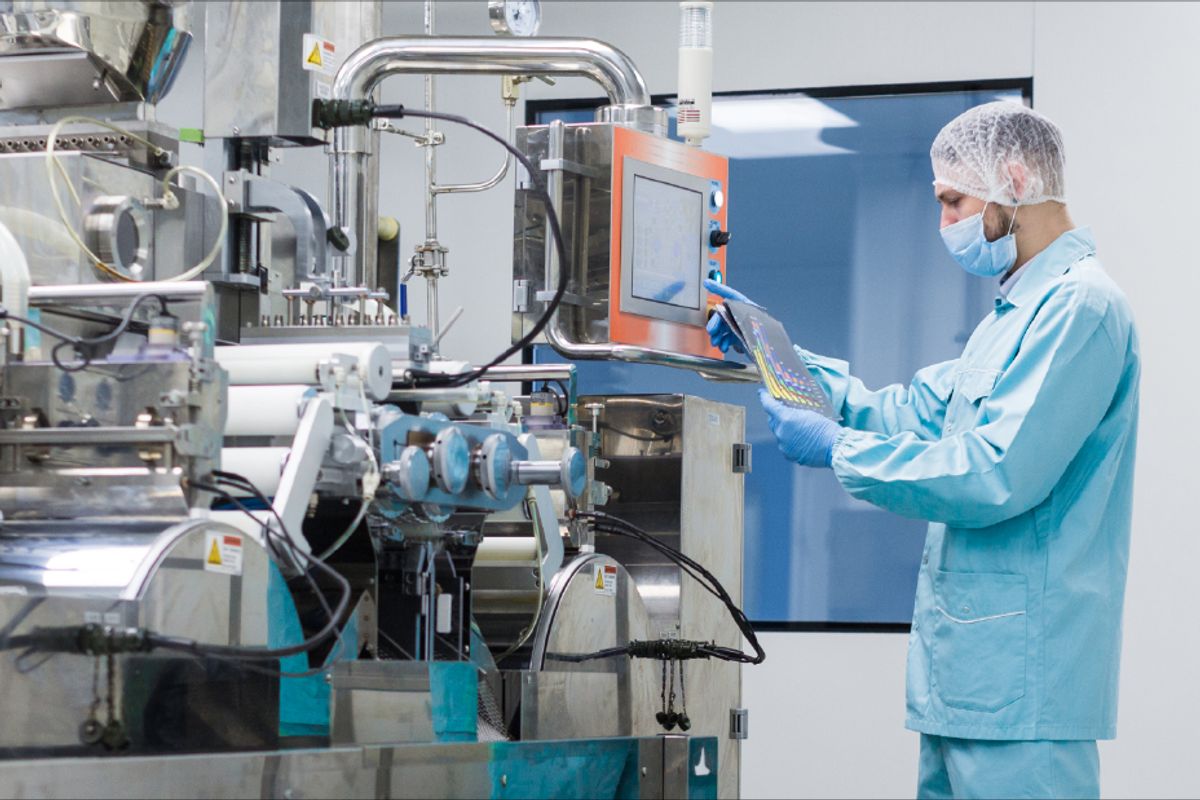3 Myths About Optimising Pharmaceutical Manufacturing
Pharmaceutical manufacturing facilities need highly controlled heat, light, temperature and pressure conditions for process and operational excellence. At the same time, they need to optimise energy consumption to minimise costs and emissions, and also to achieve and enhance market competitiveness.
However, many Pharma manufacturers remain stuck in time, unable to affect the transformation necessary to achieve new, constantly changing goals in the face of a rapidly changing energy landscape. With the alarming depletion of scarce resources on one hand and the repercussions of urbanisation and climate change on the other, manufacturers are left reeling with the enormity of it all – leaving them at best clueless about where to begin, and at worst, disillusioned by unplanned initiatives that went bust.
So let’s take a look at some of the most common excuses that manufacturers use for staying put where they are and risking regulatory wrath upon themselves – excuses that have become so common over time that they have turned into myths that further discourage even more companies from considering smarter solutions.
Myth #1: Pharmaceutical manufacturing facilities have too many restrictions to afford effective optimisation.
This is possibly the biggest myth that prevents a digital overhaul in most pharmaceutical manufacturing facilities. Sure, pharmaceutical plants are highly complex environments, and it’s a given that they are operated under stringently regulated conditions. However, their operations leave plenty of room for smarter management without compromising on output quality. For instance, many machines are often left on at fixed settings 24/7, resulting in a colossal waste of energy – not only in terms of hours of use, but also in terms of excessive power usage. If a whole chiller plant runs round the clock when only a single machine/area needs cooling, both load and running time are wasted. And that’s without even considering the impact of completely avoidable emissions, or the opportunity cost of converting the area for other uses to benefit from the energy consumption.
Myth #2: Optimisation is unnecessarily expensive – and irrelevant if you have modern equipment.
This is perhaps the worst of all misconceptions. For one, doing nothing to reduce energy consumption is far more expensive than any effort to optimise its usage. For another, even the most sophisticated machines are not efficient by default – they need to be programmed to control (and if possible, successively reduce) energy usage. Let’s start with the expense of optimisation. Consider an HVAC optimisation exercise – while its energy and cost savings are immediate, its long-term returns in the form of enhanced output with the same (or lower) input kick in within anything between a few months to about five years, depending on the type and scale of operations. In fact, in the case of intelligent optimisation solutions, the returns increase progressively as systems get smarter based on learnings from ever-increasing data. Now, let’s analyse the relevance of energy optimisation in a modern plant. Take the case of variable speed chillers, which are regarded as more efficient than constant speed chillers. While theoretically true, variable speed chillers display higher efficiency only when their loads are managed to leverage variable operational speeds – and also to work seamlessly with other connected machines and processes to extract the maximum use from every unit of energy consumed.
Myth #3: A fault detection system is all it takes to optimise energy.
Again, false. A fault detection system – via a user-friendly dashboard – is all it takes to get started. A fault detection, tracking and analysis dashboard is only the beginning of the journey to automating operation, plant and site-level energy optimisation – at consistently improving levels of efficiency. True energy optimisation adopts a holistic approach to operational efficiency, viewing and managing the system and all of its interlinked processes in entirety, as opposed to regarding each component and process in isolation. What’s more, it constantly measures system input (energy) versus system output (light, temperature, pressure etc.) so that necessary adjustments can be made dynamically – and in real time – to ensure maximum efficiency regardless of inherent variations in ambient conditions.
What manufacturers need to know: The time to act is now.
Given the particularly power-hungry nature of pharmaceutical manufacturing operations, they are under the scanner of nearly every regulatory authority in every geography to adhere to stringent sustainability goals and contribute immediately towards a cleaner, greener future. With the advent of digitisation, big data and artificial intelligence, it has become possible to view complex operations holistically and plan them in such a way that all system requirements are satisfied with minimal energy expenditure. In addition, it’s possible to identify hidden system deficiencies that are otherwise undetectable by the human eye, thus helping prevent further energy wastage.
Pharmaceutical plants are in dire need of such a comprehensive energy optimisation solution that can progressively cut down on energy consumption, wastage and cost – and boost operational efficiency





